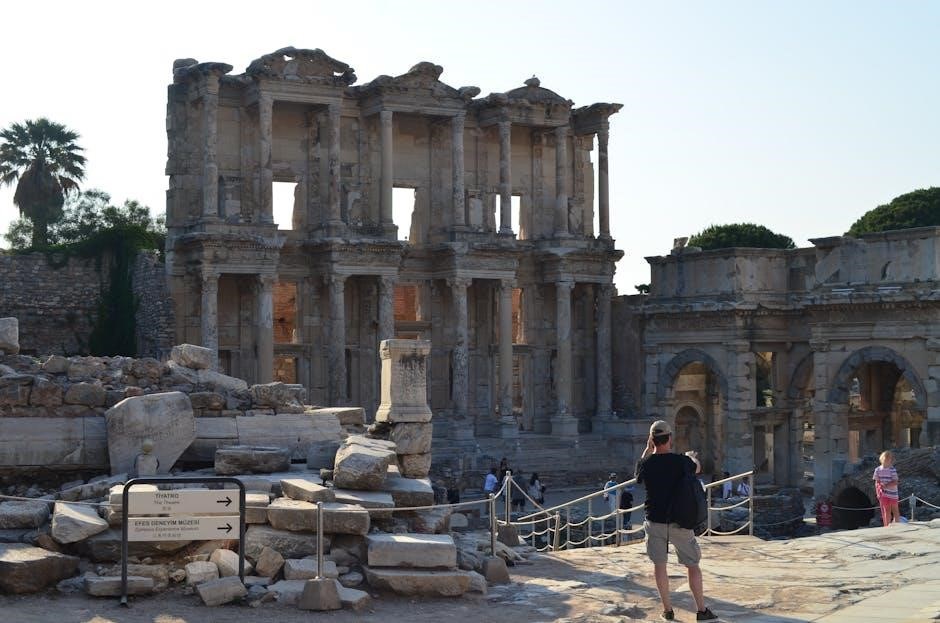
Jerry Thomas, known as the “father of American mixology,” revolutionized bartending with his Bartenders Guide, a landmark work that standardized cocktail recipes and techniques, shaping modern mixology.
1.1. Who Was Jerry Thomas?
Jerry Thomas, born Jeremiah P. Thomas on October 30, 1830, was a pioneering American bartender and mixologist. Known as the “father of American mixology,” he gained fame for his creativity, showmanship, and innovative techniques behind the bar. Thomas owned and operated saloons in New York City, becoming a central figure in popularizing cocktails across the United States. His travels, including a stint in Europe, influenced his craft, introducing new ideas to American bartending. Thomas’s charisma and skill elevated the profession, making him a legendary figure in the history of mixology. His work laid the foundation for modern bartending, cementing his legacy as one of the most influential bartenders of all time.
1.2. The Significance of the Bartenders Guide
Jerry Thomas’s Bartenders Guide stands as a cornerstone of cocktail literature, marking the first comprehensive guide to mixed drinks in the English language. Published in 1862, it introduced standardized recipes for cocktails, punches, and other beverages, offering a structured approach to bartending. The guide included iconic recipes like the Mint Julep and Whiskey Sour, establishing these drinks as classics. Its influence extended beyond the United States, shaping global cocktail culture. The book’s impact was profound, elevating bartending from an informal craft to a respected profession. Its legacy endures, with modern bartenders continuing to draw inspiration from Thomas’s pioneering work, making the Bartenders Guide an indispensable resource in the world of mixology.

Early Life and Career of Jerry Thomas

Born on October 30, 1830, Jerry Thomas was a renowned American bartender who owned saloons in New York City, becoming a pioneer in mixology and cocktail culture.
2.1. Birth and Background
Jerry Thomas, born Jeremiah P. Thomas on October 30, 1830, in New Haven, Connecticut, was the son of a family of modest means. His early life laid the foundation for his future career, as he developed an interest in mixology from a young age. Thomas’s journey began in the hospitality industry, where he worked in various roles before becoming a bartender. His travels and experiences during his formative years exposed him to diverse drinking cultures, which later influenced his innovative techniques. By 1853, he had married and started his own saloon in New York City, marking the beginning of his rise as a pioneering figure in bartending. His background and early career set the stage for his eventual success as the “father of American mixology.”

2.2. Rise to Fame as a Bartender
Jerry Thomas’s rise to fame began in New York City, where he owned and operated prominent saloons, showcasing his exceptional bartending skills and theatrical flair. His creativity in crafting innovative cocktails and his charismatic showmanship set him apart, earning him the nickname “Professor” Jerry Thomas. Thomas’s travels, including a stint as a guest bartender in London’s Cremorne Pleasure Gardens in 1859, further enhanced his reputation. He introduced American-style cocktails to England, broadening his influence. By the 1860s, Thomas was celebrated as a pioneer in mixology, known for his ability to elevate the art of bartending. His work laid the foundation for modern cocktail culture, solidifying his status as a legendary figure in the history of bartending.

Publication and Evolution of the Bartenders Guide
First published in 1862, Jerry Thomas’s Bartenders Guide revolutionized mixology by standardizing cocktail recipes and techniques. Later editions, including 1876 and 1887, expanded its influence, solidifying its legacy as a foundational text in bartending history.
3.1. The 1862 Edition and Its Impact
The 1862 edition of Jerry Thomas’s Bartenders Guide marked a pivotal moment in mixology, becoming the first serious American book on cocktails and punches. It introduced standardized recipes for drinks like the Mint Julep and Manhattan, offering a structured approach to bartending. The guide categorized beverages, including cocktails, punches, and cobblers, and featured innovative techniques such as pre-bottled cocktails to streamline service. Thomas’s work not only elevated bartending from a trade to an art form but also popularized cocktail culture nationwide. Its impact was immediate, establishing Thomas as a pioneer and setting the foundation for modern bartending practices. The book’s influence endured, making it a cornerstone of mixology history.
3.2. Subsequent Editions and Updates
Following the success of the 1862 edition, Jerry Thomas’s Bartenders Guide underwent several updates and reprints, further cementing its influence. A notable edition was published in 1876 during Thomas’s lifetime, incorporating new recipes and refining existing ones. After Thomas’s death in 1885, an 1887 posthumous edition emerged, adding popular late-19th-century drinks to the collection. These updates ensured the guide remained relevant, adapting to evolving tastes and trends. The 1887 edition, for instance, reflected the growing diversity of cocktail culture by including international flavors and techniques. These subsequent editions not only expanded the book’s content but also solidified its status as a foundational text in mixology, continuing to inspire bartenders and cocktail enthusiasts long after its initial publication.

Key Contents of the Bartenders Guide
The Bartenders Guide includes recipes for cocktails, punches, juleps, and sours, featuring classics like the Manhattan and Daisy. It covers international drinks, from American to Russian flavors, providing a comprehensive mixology resource for both professionals and enthusiasts, solidifying its role as a foundational text in cocktail culture.
4.1. Types of Drinks Covered
Jerry Thomas’s Bartenders Guide includes an extensive range of drinks, from classic cocktails and punches to juleps, cobblers, and sours. The guide covers American, English, French, German, Italian, Spanish, and Russian beverages, showcasing Thomas’s global influence. It features iconic drinks like the Mint Julep and Whiskey Sour, alongside lesser-known concoctions. The Bartenders Guide also introduces bottled cocktails and punches for quicker service, reflecting Thomas’s innovative approach. The variety of recipes catered to both professional bartenders and home enthusiasts, making it a comprehensive resource for mixology. This diversity of drink types solidified the guide’s reputation as a foundational text in cocktail culture and history. Its detailed instructions and creative recipes remain influential, offering insights into 19th-century drinking traditions.
4.2. Classic Recipes and Their Significance

Jerry Thomas’s Bartenders Guide is renowned for its compilation of classic recipes that laid the foundation for modern mixology. The guide includes iconic drinks like the Mint Julep, Whiskey Sour, and the Daisy, each detailed with precise measurements and methods. These recipes were groundbreaking, as they standardized cocktail preparation and introduced innovative techniques. The Mint Julep, for instance, became a hallmark of American drinking culture, while the Whiskey Sour showcased Thomas’s mastery of balancing flavors. The guide also features the first printed recipe for the Manhattan, a drink that remains a staple in bars worldwide. The significance of these recipes lies in their enduring popularity and their role in defining cocktail culture during the Golden Age of bartending. They not only reflect Thomas’s creativity but also established a legacy that continues to inspire bartenders today.

Jerry Thomas and the Popularization of Cocktails
Jerry Thomas played a pivotal role in spreading cocktail culture across the U.S. and internationally, introducing innovative techniques and showmanship that captivated audiences and elevated bartending into an art form.
His travels and work in prominent saloons, coupled with the publication of his Bartenders Guide, helped standardize cocktail recipes and methods, making them accessible and widely embraced by the masses.

5.1. His Role in Cocktail Culture
Jerry Thomas was instrumental in defining and popularizing cocktail culture in the United States and beyond. His charisma, showmanship, and creativity behind the bar set him apart as a pioneer in mixology. By standardizing recipes and techniques, he transformed bartending from an informal craft into a respected profession. Thomas’s travels and work in prominent saloons allowed him to introduce new drinks and methods, captivating audiences and spreading cocktail culture widely. His ability to innovate and adapt drinks to local tastes further cemented his reputation as a master bartender. Through his work, Thomas not only elevated the status of bartenders but also created a foundation for the modern cocktail movement, making him a central figure in the history of mixology.
5.2. Innovations and Techniques Introduced
Jerry Thomas introduced groundbreaking innovations that transformed bartending into an art form. His Bartenders Guide was the first to standardize cocktail recipes, ensuring consistency and accessibility for professionals and home enthusiasts alike. Thomas popularized the concept of “fancy drinks,” incorporating intricate garnishes and presentation, which elevated the visual appeal of cocktails. He also pioneered techniques like layering, muddling, and the use of egg whites, expanding the range of textures and flavors in mixology. His showmanship, including lighting drinks on fire, added theatricality to bartending, setting a new standard for entertainment behind the bar. Additionally, Thomas introduced bottled punches and pre-mixed cocktails, streamlining service in busy settings. These innovations not only advanced the craft but also established Jerry Thomas as a visionary in the world of cocktails. His techniques remain foundational to modern bartending practices.

Legacy of Jerry Thomas and His Guide
Jerry Thomas’s Bartenders Guide remains a cornerstone of mixology, influencing modern bartending and earning historical acclaim as a collectible treasure in cocktail culture and history.
6.1. Influence on Modern Bartending
Jerry Thomas’s Bartenders Guide laid the foundation for modern mixology, introducing techniques and recipes that remain integral to bartending today. His emphasis on precision, creativity, and presentation inspired generations, establishing standards for cocktail preparation. The guide’s inclusion of classic recipes, such as the Mint Julep and Whiskey Sour, ensured their survival and adaptation in contemporary menus. Thomas’s showmanship and innovative methods, like the use of simple syrup and clarified punches, influenced the evolution of mixology. Today, his work is a cornerstone of bartender training, with modern practitioners often drawing inspiration from his legacy. The guide’s reprints and adaptations continue to guide bartenders, cementing Thomas’s role in shaping the craft into what it is now.
6.2. Historical Recognition and Collectibility
Jerry Thomas’s Bartenders Guide is highly regarded as a seminal work in cocktail history, earning it significant recognition and collectibility. The 1862 edition is particularly prized by collectors and historians, often referred to as the “bible of mixology.” Its historical significance lies in being the first comprehensive guide to cocktails, making it a cornerstone of drink history. Over the years, numerous reprints and editions have been published, with the 1887 posthumous edition being especially sought after. The guide’s influence on cocktail culture has solidified its reputation, and rare copies are highly valued by enthusiasts and institutions. Its enduring relevance and historical importance ensure its place as a treasured artifact in the world of mixology and culinary history;